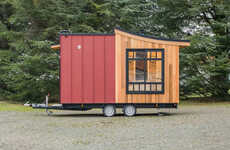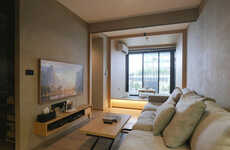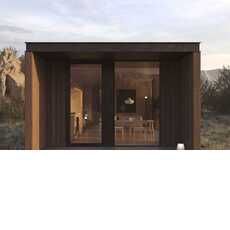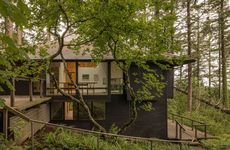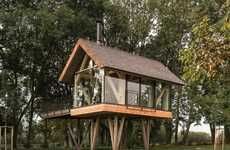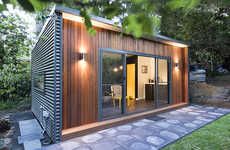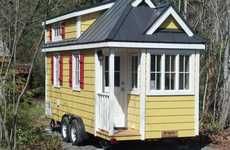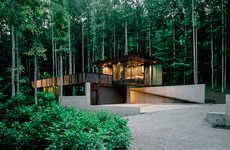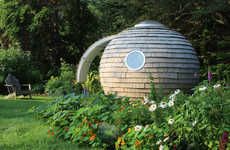
These Tiny Wooden Huts Feature Only the Bare Essentials
Katherine Pendrill — November 3, 2015 — Art & Design
References: designboom & treehugger
'MUJI' recently installed two tiny wooden huts in a Tokyo park to highlight the advantages of a minimalist lifestyle. While Japan is already know for its compact living quarters, these miniature sheds push the idea of the microhome to its extreme.
The wooden huts were designed by Konstantin Grcic and presented at the Design Touch 2015 event. Each of the compact huts features sleek wooden cladding and a corrugated roof. The homes are so tiny that the designer did not even need local planning permission to build the structures. While the homes are big enough to move around in, they lack basic necessities such as running water and electricity. As a result, Grcic sees the huts as more of a studio space.
The minimalist huts demonstrate the beauty and simplicity of small spaces.
Photo Credits: treehugger, designboom
The wooden huts were designed by Konstantin Grcic and presented at the Design Touch 2015 event. Each of the compact huts features sleek wooden cladding and a corrugated roof. The homes are so tiny that the designer did not even need local planning permission to build the structures. While the homes are big enough to move around in, they lack basic necessities such as running water and electricity. As a result, Grcic sees the huts as more of a studio space.
The minimalist huts demonstrate the beauty and simplicity of small spaces.
Photo Credits: treehugger, designboom
Trend Themes
1. Minimalist Living Spaces - The trend of minimalist living spaces focuses on creating functional and simple living environments with only the bare essentials, offering opportunities for innovative design and sustainable solutions.
2. Compact Housing Solutions - The trend of compact housing solutions explores the concept of maximizing living space in small structures, presenting opportunities for modular and space-saving designs.
3. Sustainable Microhome Movement - The trend of sustainable microhome movement aims to promote environmentally-friendly and energy-efficient living options, creating opportunities for eco-conscious innovations and off-grid solutions.
Industry Implications
1. Architecture and Interior Design - The architecture and interior design industry can leverage the trend of minimalist living spaces to develop innovative and efficient designs for small spaces.
2. Construction and Real Estate - The construction and real estate industry can capitalize on the trend of compact housing solutions by creating affordable and innovative housing solutions for urban areas with limited space.
3. Renewable Energy and Sustainability - The renewable energy and sustainability industry can embrace the trend of sustainable microhome movement by developing energy-efficient systems and technologies tailored for off-grid and compact living environments.
6.5
Score
Popularity
Activity
Freshness




